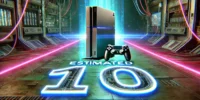The Impact Of Emotional Design In Website User Experience
As a website owner, you know that user experience is key to keeping customers engaged and coming back for more. But have you considered the impact of emotional design on your website’s user experience?
Emotional design refers to the intentional use of design elements to evoke specific emotions from website users. And it can make all the difference in how users perceive and interact with your website.
Emotional design is important because it helps create a connection between your website and users. By tapping into their emotions, you can create a more memorable and enjoyable experience that users are more likely to remember and recommend to others.
Plus, emotional design can help set your website apart from competitors and give it a unique personality that users can relate to. In this article, we’ll explore the role of emotions in user experience, the psychology of color and design in emotional design, and how to incorporate emotional design elements into your website for a consistent and impactful user experience.
Key Takeaways
- Emotional design can help create a connection between your website and users, making the experience more memorable and enjoyable.
- Incorporating emotional design elements into your website can enhance the appeal of your website to your audience.
- To ensure a cohesive and memorable journey through your site, it’s important to maintain a consistent emotional tone throughout every page and interaction.
- Testing your website with users is important to ensure that the emotional experience is consistent and effective.
What is Emotional Design and Why is it Important?
So, you’re probably wondering: what’s emotional design and why should you even care about it?
Well, let me tell you, emotional design is all about creating a website experience that taps into your feelings and connects with you on a deeper level. And trust me, when a website does this successfully, it can make all the difference in keeping you engaged and coming back for more.
Basically, emotional design focuses on the visual and interactive elements of a website that can evoke emotions and create a more memorable experience. From the color scheme and font choice to the way images and videos are presented, everything is carefully crafted to trigger specific emotions.
And when done right, emotional design can increase user engagement, build brand loyalty, and even drive sales. So, if you’re looking to create a website that truly resonates with your audience, emotional design is definitely something you should consider.
Understanding the Role of Emotions in User Experience
Understanding how our feelings influence our perception and decision-making is crucial in creating a satisfying and memorable digital interaction. When it comes to website user experience, emotions play a significant role in shaping the overall impression of your brand.
Here are some ways emotions affect user experience:
-
Emotions can influence how users perceive the website’s usability. A website that evokes positive emotions such as joy and excitement can make users more forgiving of minor usability issues.
-
Emotions can also affect the level of engagement users have with the website. If a website triggers negative emotions such as frustration or confusion, users are more likely to abandon the website altogether.
-
Emotions can impact users’ decision-making processes. When users experience positive emotions, they’re more likely to make purchasing decisions or take other desirable actions.
-
Finally, emotions can shape users’ memories of the website. A positive emotional experience can create a lasting impression and increase the likelihood of repeat visits and brand loyalty.
By understanding the role of emotions in user experience, you can create a website that not only meets users’ functional needs but also resonates with them emotionally. This can lead to a more satisfying, engaging, and memorable digital interaction for your users.
The Psychology of Color and Design in Emotional Design
Using colors and design elements strategically can create a visual language that taps into users’ emotions and enhances their overall perception of your digital content. The psychology of color and design is an important aspect of emotional design that can be leveraged to create a powerful user experience.
Colors have the ability to evoke certain emotions and associations. For example, red is associated with passion and excitement, while blue is often associated with calmness and trustworthiness.
Design elements such as typography, imagery, and layout can also impact emotional design. Bold typography can convey confidence and authority, while images that depict happy people can create a sense of warmth and positivity.
The layout of a website can also impact emotions. A cluttered layout often causes feelings of overwhelm and frustration, while a clean and simplistic layout can evoke a sense of calm and ease.
By understanding the psychology of color and design, you can create a website that not only looks visually appealing but also elicits the desired emotional response from your users.
Incorporating Emotional Design Elements into Your Website
You can enhance the appeal of your website to your audience by incorporating design elements that tap into their emotions and create a memorable experience. Here are three ways to incorporate emotional design elements into your website:
-
Use images and videos that evoke emotion: People respond strongly to visuals, particularly those that elicit an emotional response. Incorporate images and videos that align with your brand and message, and that will resonate with your audience. Whether it’s a touching story, a funny meme, or a breathtaking landscape, the right visual can make a lasting impression on your visitors.
-
Utilize color psychology: As discussed in the previous subtopic, color can have a powerful impact on emotions and behavior. Use color psychology to your advantage by selecting colors that align with your brand and message, and that will evoke the desired emotional response from your audience. For example, blue is often associated with trust and reliability, while red can evoke passion and excitement.
-
Focus on user experience: Emotional design isn’t just about aesthetics; it’s also about creating a positive user experience. Pay attention to the functionality of your website, including navigation, load times, and mobile responsiveness. A seamless user experience can create a sense of ease and satisfaction, which can ultimately contribute to a positive emotional response from your audience.
Creating a Consistent Emotional Experience Across Your Website
To ensure your visitors have a cohesive and memorable journey through your site, it’s important to maintain a consistent emotional tone throughout every page and interaction. This means that your website should have a clear personality and brand voice that resonates with your target audience. Whether it’s through the use of color, imagery, or content, every element should work together to evoke a specific emotional response.
One way to create a consistent emotional experience is to establish a style guide for your website. This guide should outline the tone, language, and visual elements that’ll be used throughout the site. By adhering to this guide, you can ensure that every page and interaction aligns with your brand’s personality and values.
Additionally, it’s important to test your website with users to ensure that the emotional experience is consistent and effective. By gathering feedback and making adjustments as needed, you can create a website that truly resonates with your audience.
Measuring the Impact of Emotional Design on User Engagement
Now that you’ve learned about creating a consistent emotional experience across your website, it’s time to measure the impact of emotional design on user engagement. Emotional design focuses on creating a positive emotional response in users, which can lead to increased engagement and conversion rates.
But how do you measure the impact of emotional design on user engagement?
One way to measure the impact of emotional design is through user testing. By observing how users interact with your website, you can gather insights on how emotional design affects their behavior. You can also use surveys and feedback forms to gather user opinions on the emotional impact of your website.
Another way to measure the impact of emotional design is through analytics. By tracking metrics such as bounce rate, time on site, and conversion rates, you can determine how emotional design affects user engagement and conversion.
Ultimately, measuring the impact of emotional design on user engagement is essential to creating a successful website that connects with users on an emotional level.
Case Studies: Examples of Successful Emotional Design in Websites
Get inspired by real-life examples of websites that successfully evoke emotions in their visitors, leading to increased engagement and conversions. Emotional design in websites can create a strong connection with the user, making them more likely to stay on the site, explore further, and ultimately take action.
Here are two case studies of websites that have effectively implemented emotional design to improve their user experience:
-
The first example is Airbnb, which uses high-quality photography and clear descriptions to create an emotional connection with users. By showcasing beautiful homes and unique experiences, Airbnb encourages users to imagine themselves in these spaces and feel excited about booking a stay. This emotional connection has led to increased engagement on the site and higher conversion rates.
-
Another successful example is Headspace, a meditation app that uses calming colors and simple design elements to create a sense of peace and relaxation for its users. By evoking positive emotions, Headspace has created a loyal user base that returns to the app regularly for their meditation practice. This emotional design has not only improved the user experience but also led to increased user retention and referrals.
Tips for Implementing Emotional Design in Your Website Design Process
Immerse your audience in an evocative world of colors, fonts, and images to create a memorable and engaging website that resonates with their emotions. Emotional design is all about creating a cohesive user experience that appeals to the user’s senses and emotions. Here are some tips for implementing emotional design in your website design process:
| Tip 1 | Tip 2 | Tip 3 |
|---|---|---|
| Use colors that evoke the desired emotion | Choose fonts that match the tone of the content | Incorporate images that tell a story |
| Colors have a psychological impact on people | Fonts can convey a sense of playfulness or professionalism | Images can help create an emotional connection with the user |
| Consider the emotions you want the user to feel | Experiment with different fonts to find the right fit | Use images that are relevant to your content |
By following these tips, you can create a website that not only looks great but also connects with the user on an emotional level. Remember, emotions are a powerful tool for creating a memorable user experience, so don’t be afraid to think outside the box and try new things. With a little experimentation and creativity, you can create a website that truly resonates with your audience.
Conclusion
So, you now know that emotional design plays a crucial role in enhancing user experience on your website. By incorporating design elements that evoke emotions, you can improve user engagement, build stronger connections with your audience, and ultimately boost conversions.
Remember that emotions are a key factor in decision-making, and by appealing to your users’ emotions, you can make your website stand out from the competition.
To get started, take a closer look at your website’s design and identify areas where you can incorporate emotional design elements. Consider the psychology of color and design, and think about how you can create a consistent emotional experience across all pages of your site.
By implementing these tips and strategies, you can create a website that not only looks great but also connects with your audience on a deeper level. So, go ahead and give emotional design a try, and see how it can take your website user experience to the next level.







